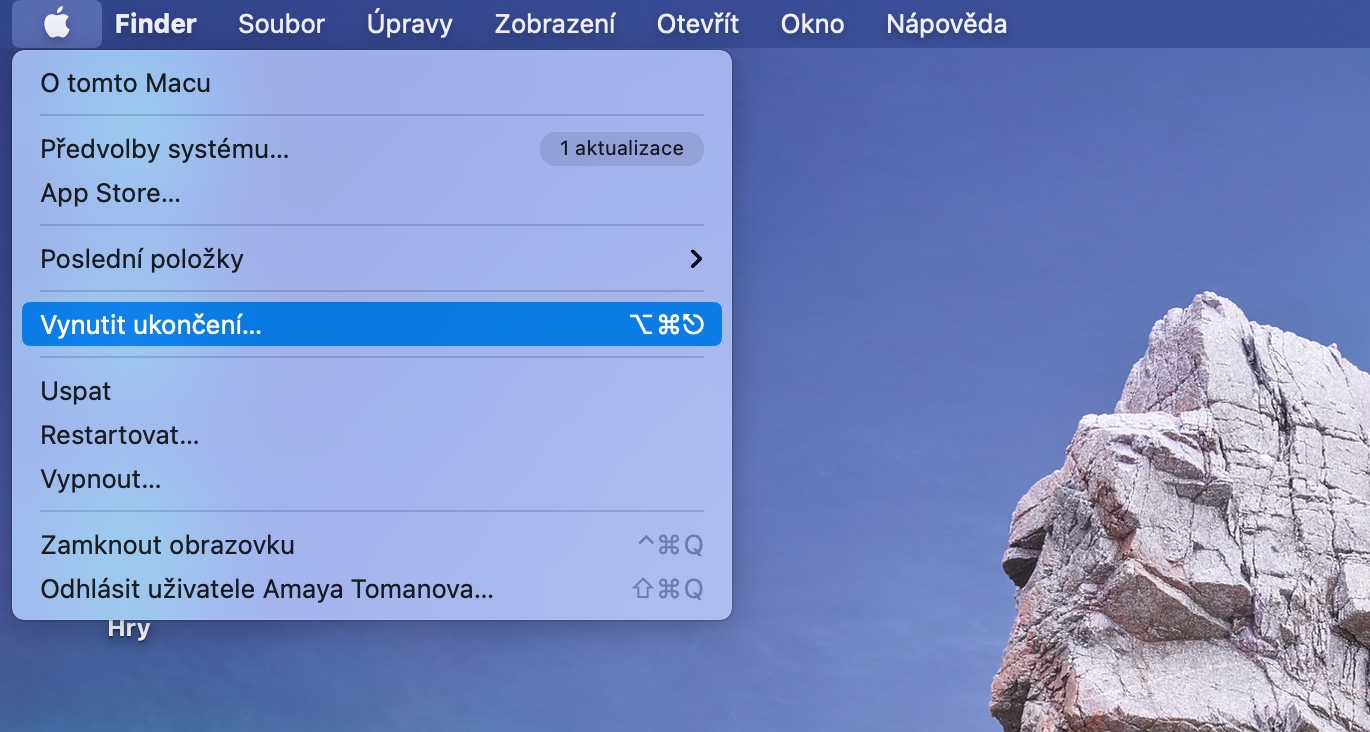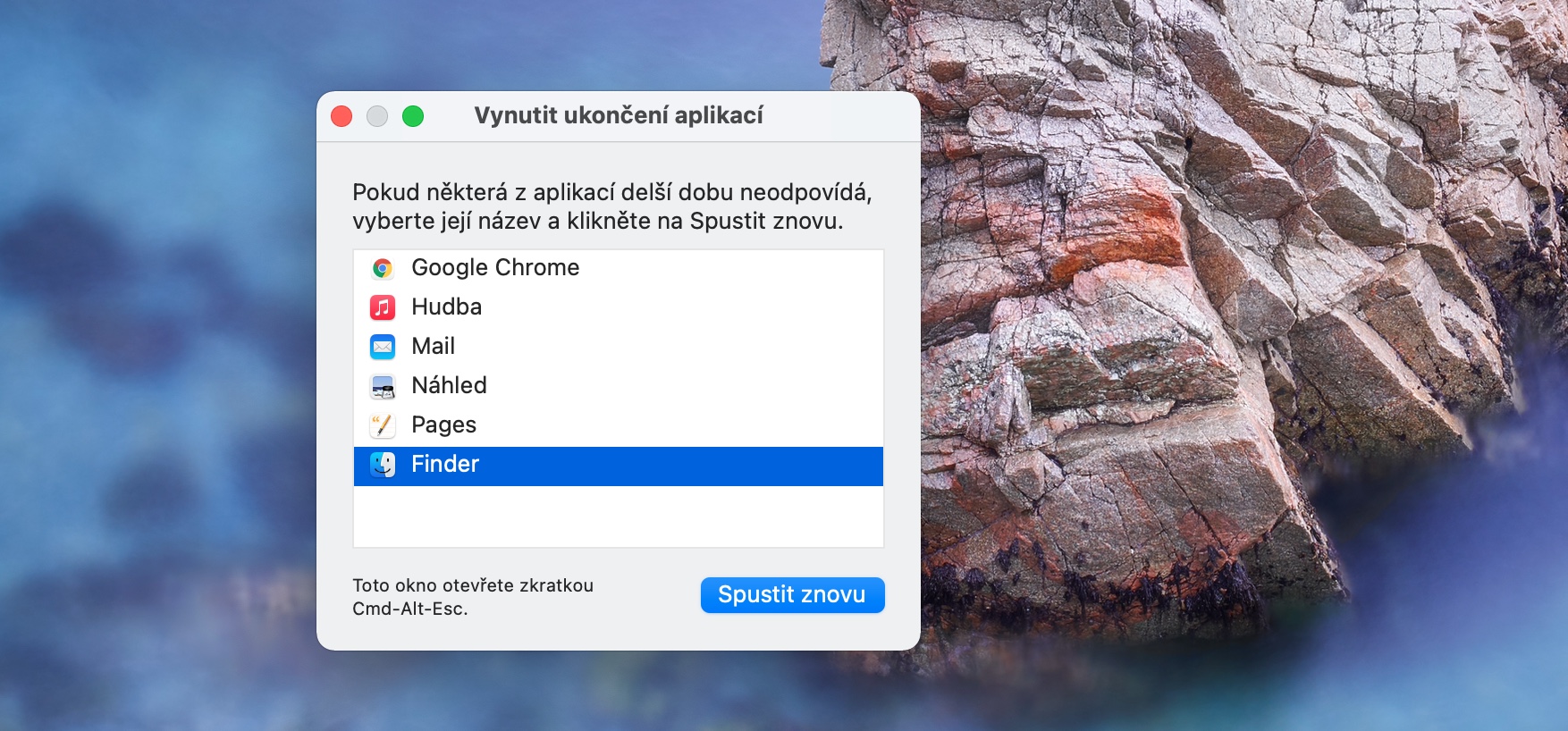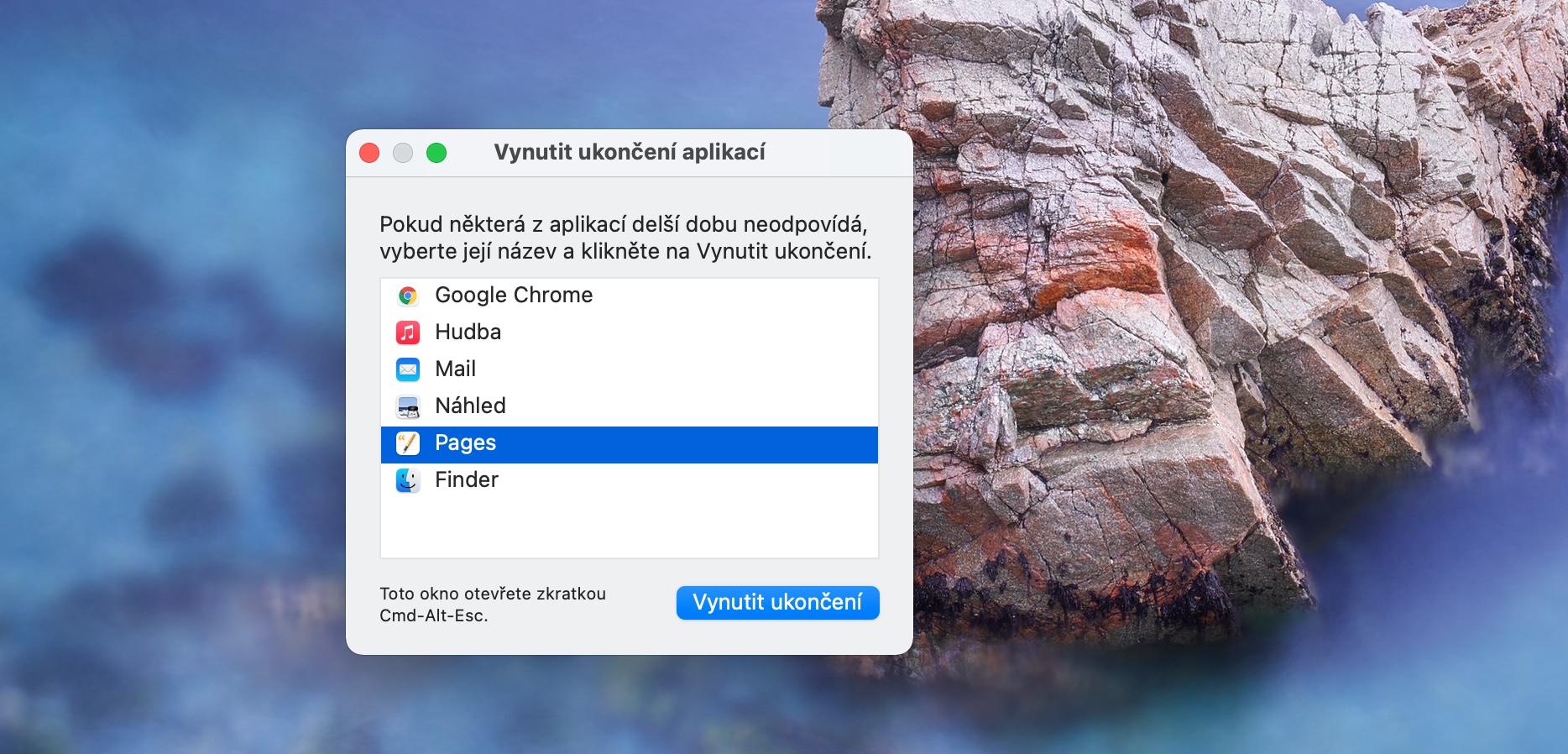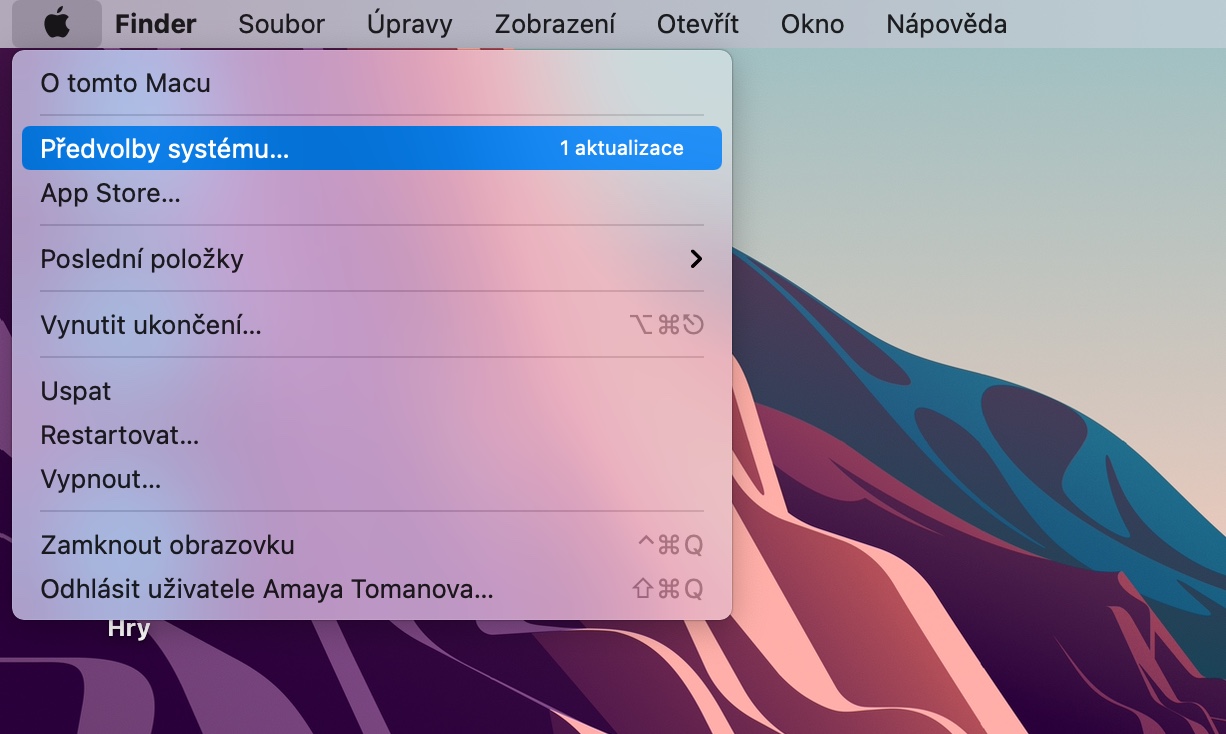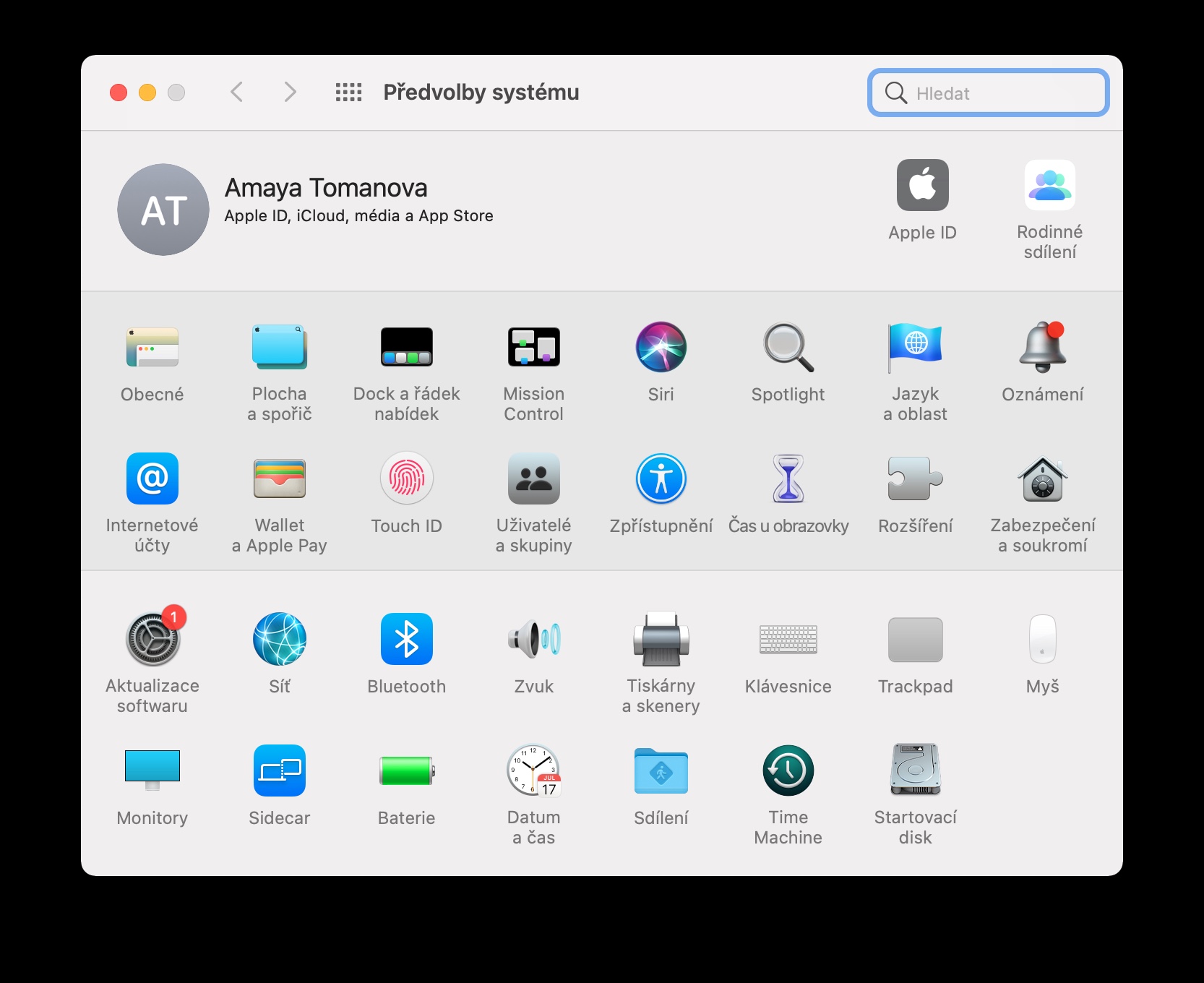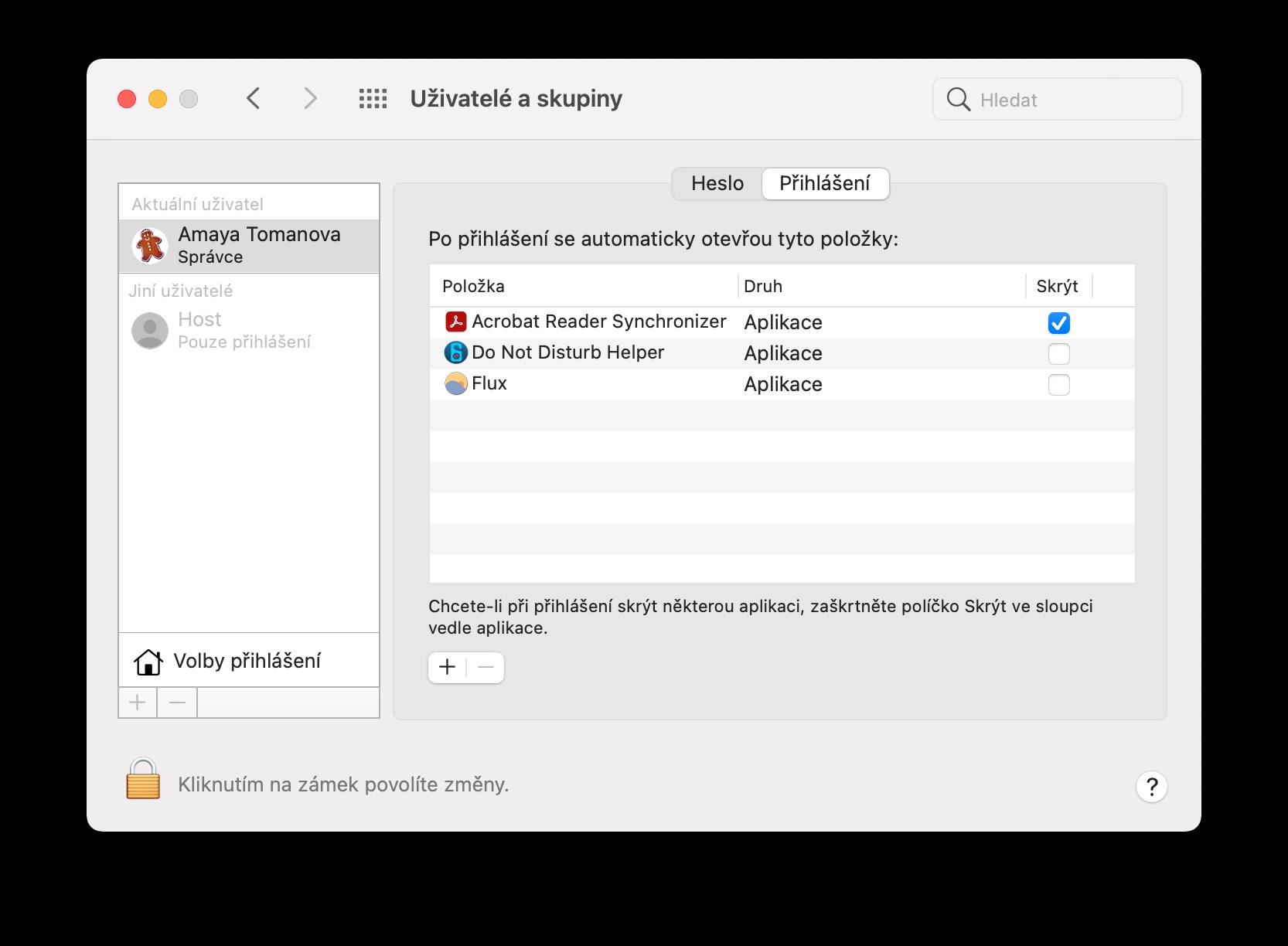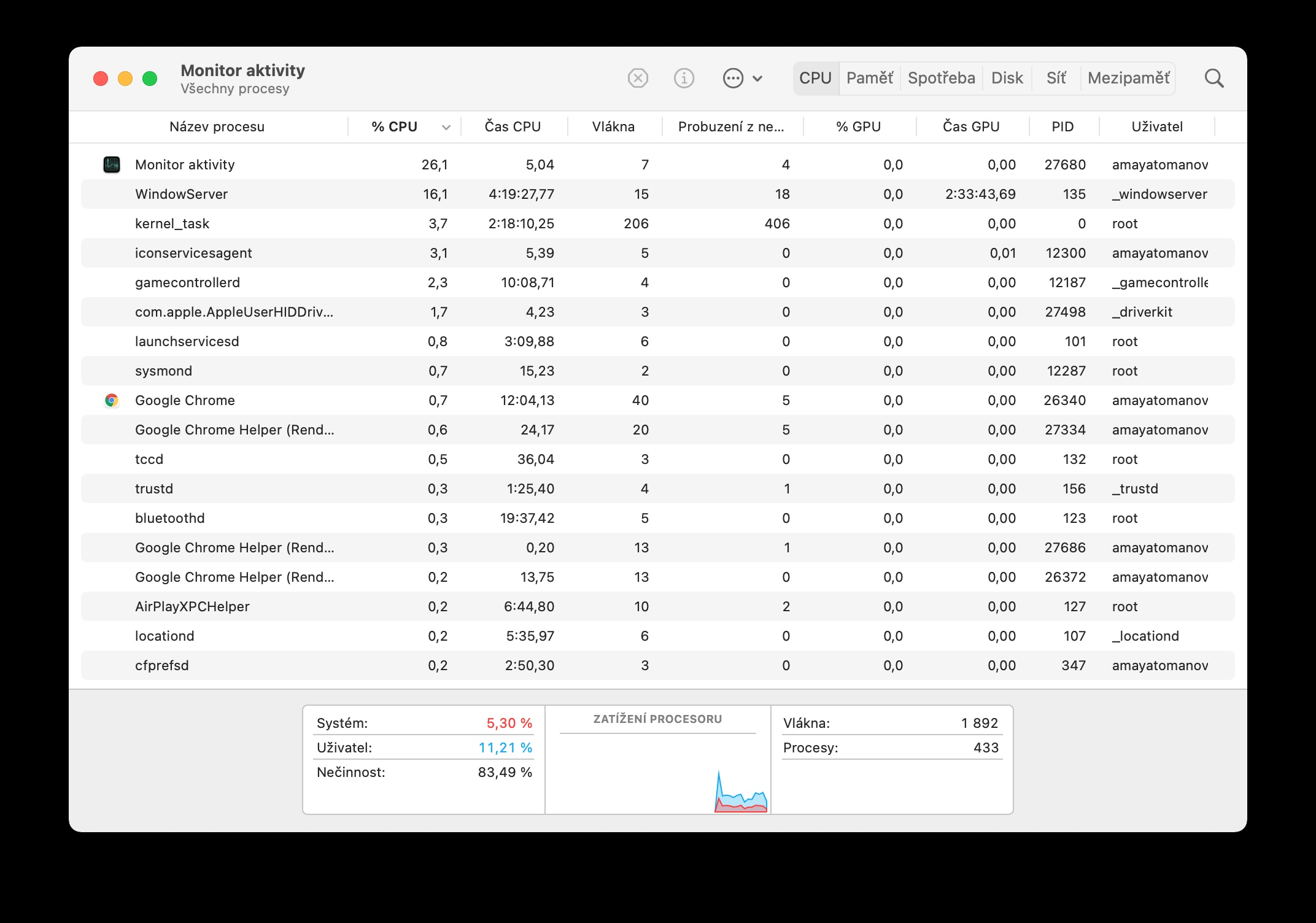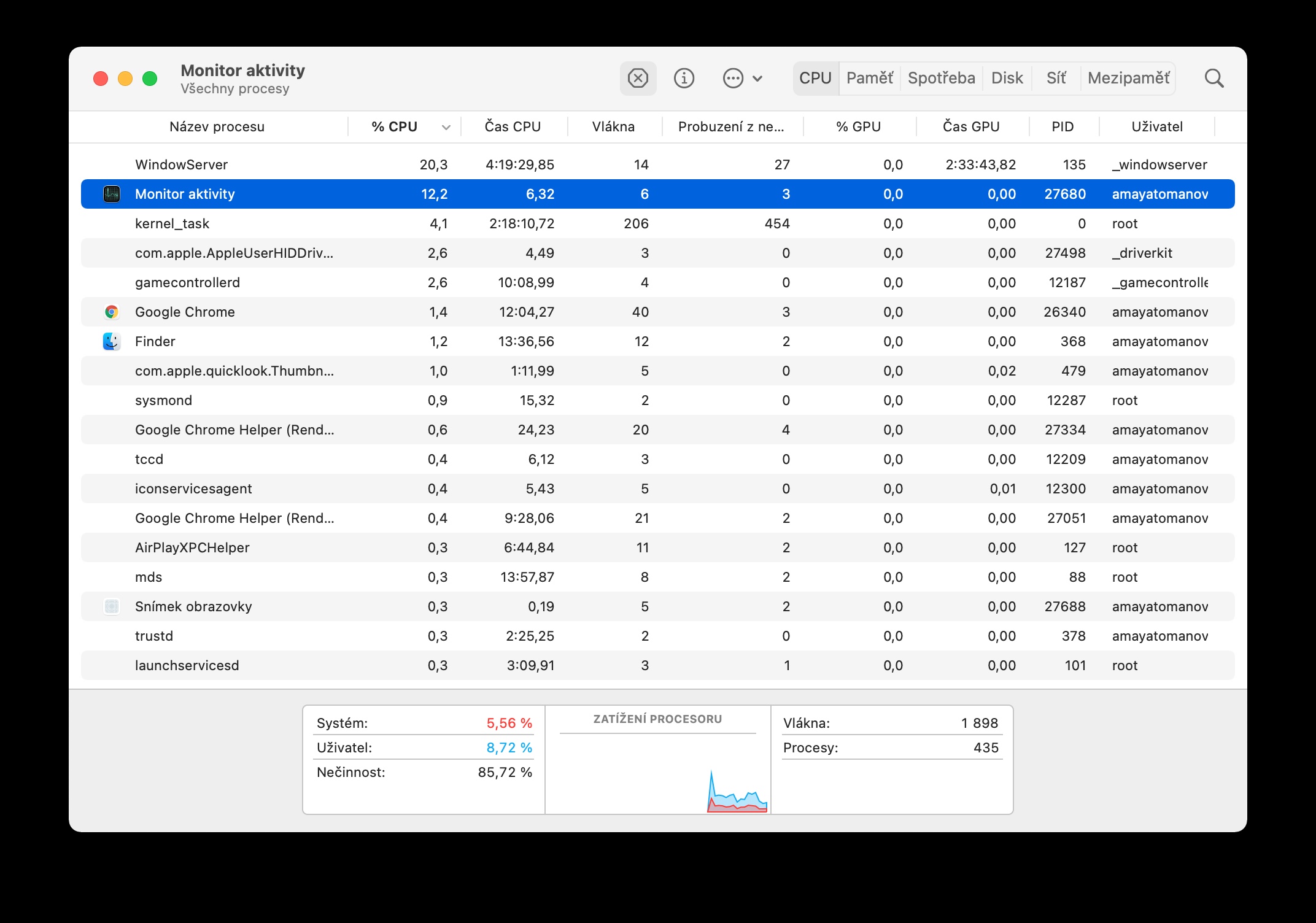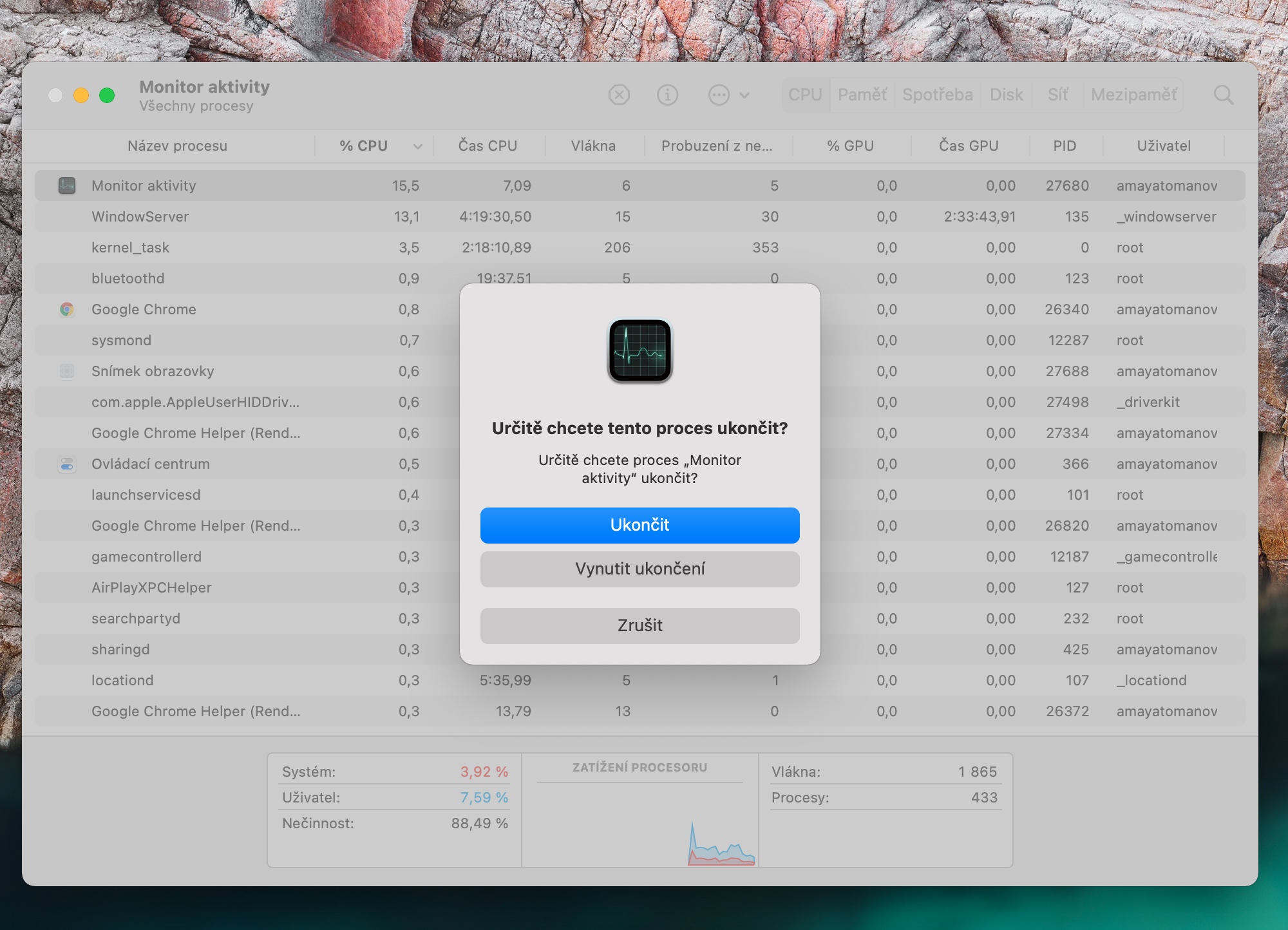Apple computers are usually characterized, among other things, by smooth, trouble-free, relatively fast operation. Even with these machines, however, it can happen from time to time under certain circumstances that they do not run as fast as at the beginning. Fortunately, in many cases this is not a permanent problem, and you can use a few tricks to make your Mac a little faster again.
It could be interest you
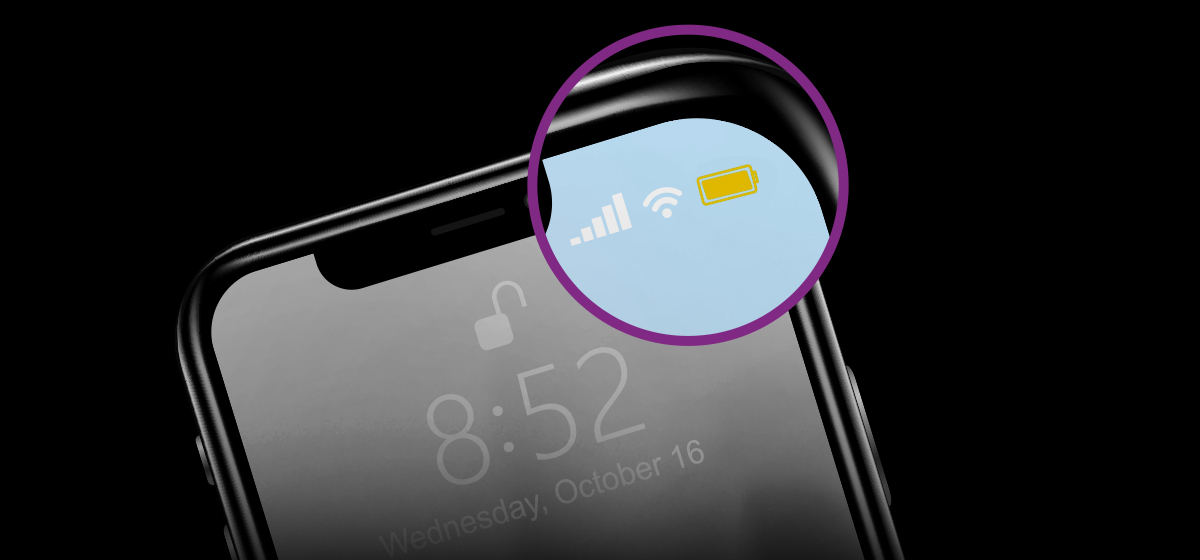
Restart
In many of our tutorials and articles with tips and tricks, the obligatory "have you tried turning it off and on again?" is not missing. But this seemingly simple act often has an almost miraculous power. Many of us don't turn off our Macs and simply close the lid when we're done. Try your computer from time to time turn off and on again, or restart by clicking on menu in the upper left corner of the screen -> Restart. You might be surprised how much faster your Mac runs.
It could be interest you
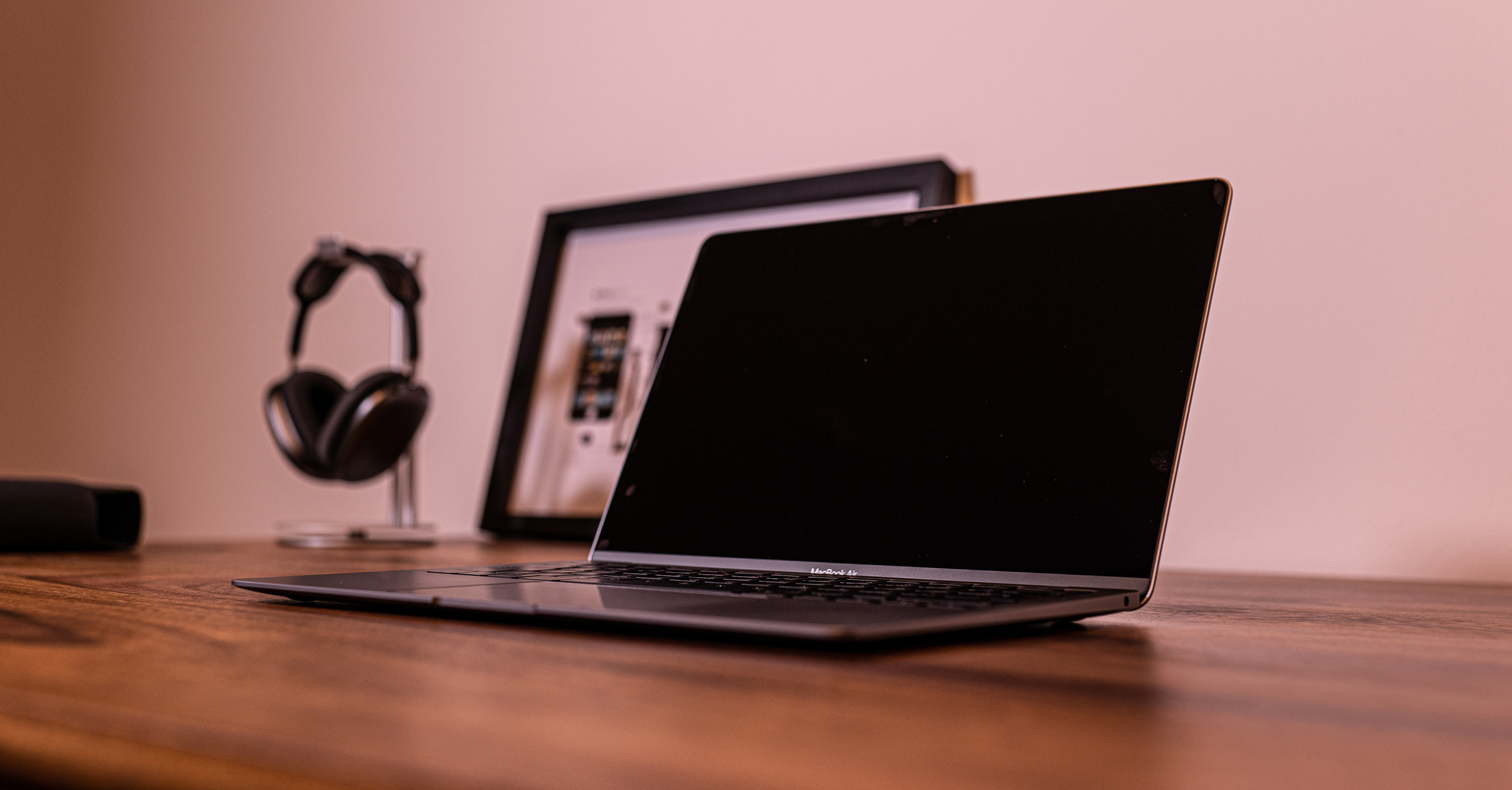
Force termination
Sometimes it can happen that some of the applications encounter problems that can prevent it from being terminated in the traditional way. In such a case, the so-called forced termination comes into play. In the upper-right corner of your Mac screen, click menu -> Force Quit, and then it's enough select an application, which you want to terminate in this way.
A smooth start
Among other things, the macOS operating system also allows selected applications to start running immediately when the computer is started. But this can significantly slow down the computer, and auto-starting applications is not always necessary. To manage apps that start when your computer starts, click in the upper-left corner of your Mac's screen menu -> System Preferences -> Users and Groups. On the left, click on your profile, select a tab Login and use the + and – buttons to add or remove applications that start after startup.
Activity monitor
Sometimes it's hard to guess which processes are causing your apple computer to slow down. A utility called Activity Monitor can help you find out why your Mac's system resources are being used up. By pressing the C keysmd + space activate on your Mac Spotlight and into his text field enter the expression "activity monitor". In upper part of the window have the processes sorted according to ppercentage of CPU consumption, or you can end the selected processes by clicking on cross icon.
Terminate running applications
Many of us also often leave applications running in the background on our computers, but with their – albeit inconspicuous – operation, they sometimes use up the computer's system resources unnecessarily. You can recognize a running application by the fact that under its icon in the Dock located at the bottom of your Mac's monitor black dot. The icon is enough right-click and choose End.
It could be interest you

 Adam Kos
Adam Kos 